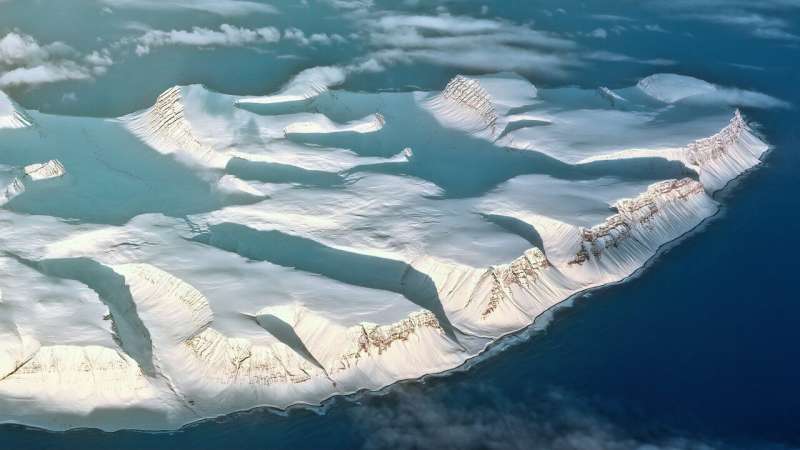Credit: Pixabay/CC0 Public Domain
A team from the Centre for Earth Observation Science at the University of Manitoba has published a paper in the Nature journal Communications Earth & Environment that addresses a large gap in our understanding of Arctic Sea Ice coverage.
Their paper, "Arctic open-water periods are projected to lengthen dramatically by 2100," reports on the how sensitive the seasonal retreat and advance of Arctic sea ice in specific regions are to different thresholds of global warming, that is, what happens to the ice for every degree of warming.
The crucial information that this paper provides is knowing how long the problem will last, says lead author Alex Crawford. He likens it to sports: the most important information to a coach or fan isn't the type of an injury a player has, but rather how long that player will be out of action.
This paper, led by Crawford and Canada 150 Research Chair Julienne Stroeve, both in the Clayton H. Riddell Faculty of Earth, Environment, and Resources at UM, and their colleagues at the University of Colorado, Boulder, provides such information and future projections—detailing how much the open-water periods will change in response to warming throughout 15 regions in scenarios of global average temperature increase of 2 degrees Celsius to 5 degrees Celsius.
Essentially, their results show that for every 1 degrees Celsius of global warming, the open-water period (on average) increases by about one month in the Arctic (faster change in the Arctic Ocean, slower change in the sub-Arctic seas).
"We've already seen the world warm about one degree since the 19th century—so this means the open-water period has already increased by about a month on average," Crawford said. "If we limit warming to two degrees, that means an additional one degree of warming over the next 80 years and an additional increase of one month (on average) for the open-water period. But the big implication here is that humans have a lot of control over how much the open-water period changes. There's no tipping point. So any reduction in emissions means shorter open-water periods."
Another key result of this paper is the finding that the entire Transpolar Sea Route, which is the most efficient path for a container ship to take from Japan to Europe and involves going through Bering Strait and across the North Pole, is consistently open for at least 90 days (3 months) with 3.5 degrees Celsius of warming and for at least six months with 5 degrees Celsius warming.
And the final key finding is that compared to satellite records of sea ice, nearly all climate models are either a good match for observed trends or underestimate how quickly sea ice has been changing.
"This means our results are more likely to underestimate sensitivity of the open-water period to global warming than they are to overestimate sensitivity," Crawford says.
Similar studies have looked at warming implications and sea ice retreat, but they have focused on extreme scenarios, such as 5 degrees Celsius warming. This study looks at what occurs at lower increases, which is highly relevant given the Paris Agreement goal is to limit warming to 2 degrees Celsius.
This recent study provides guidance and future projections of the open-water period (and the timing of sea ice retreat and advance) at multiple spatial scales and temperature thresholds. If and when we reach those thresholds, the researchers note, depends on the choices that we make today.
More information: Alex Crawford et al, Arctic open-water periods are projected to lengthen dramatically by 2100, Communications Earth & Environment (2021). DOI: 10.1038/s43247-021-00183-x
Journal information: Communications Earth & Environment
Provided by University of Manitoba
























